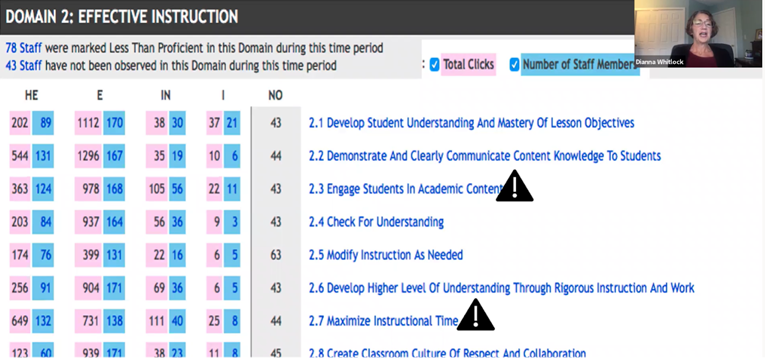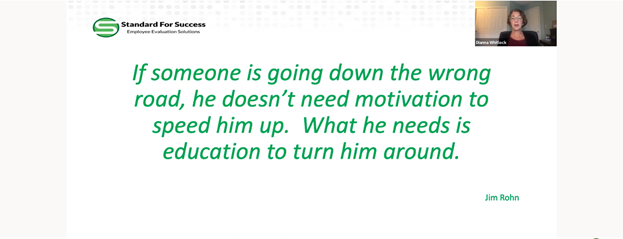By Kaitlyn Francis |
Back in the 1990s, teacher evaluations would involve putting on a show for the principal, who would check a series of simple boxes on a list, write a good comment and consider the evaluation over. Teacher evaluations were also seen as a way to “catch” in the act and then dismiss those teachers.
That was the picture painted by several educators who composed a panel at the AASA conference on Friday, Feb. 19, “Teacher Evaluation as a Growth Process.”
Today, however, the goal for teacher evaluations is to improve instructional practices and individual professional growth, said Diana Whitlock, vice president of higher education solutions with Standard for Success, an educational consulting firm based in Cloverdale, Ind. Evaluations are more than just expressions of “good job” or criticism, but a way to work with teachers.
Allen Remaly, superintendent of Clinton Central School Corporation in Michigantown, Ind., joined Whitlock in the presentation. He said his district’s evaluators work closely with teachers through a pre-conference, an observation in the classroom and a post conference.
 During the pre-conference, teachers are asked what they are going to do and what they would like the evaluators to look out for, giving ownership to the teacher. This will alleviate their fear of being observed, said Remaly. This, he noted, establishes the process as a positive growth experience and prevents teachers from getting frustrated or feeling threatened.
During the pre-conference, teachers are asked what they are going to do and what they would like the evaluators to look out for, giving ownership to the teacher. This will alleviate their fear of being observed, said Remaly. This, he noted, establishes the process as a positive growth experience and prevents teachers from getting frustrated or feeling threatened.
The post-conference is a conversation of what the teacher performed well and ways to improve instruction the evaluators may have noticed. Both conferences are needed for effective feedback, Remaly said.
The COVID-19 pandemic has caused everyone in education to make major adjustments, and the same applies to teacher evaluations. It has become less focused on evaluating and more on observing, said Remaly.
He has told his teachers to grade with grace and the administrators in his school district to evaluate with grace.
Whitlock said virtual evaluations should be based on an instructor’s teaching and not their technical skills with software platforms such as Zoom and Google Hangout.
Teachers who received regular feedback were less likely to become frustrated and leave the profession, according to a study by Standard for Success in 2016. This is important as there is a brewing national teacher shortage, Whitlock said.
Open communication is necessary to change the mindset of veteran teachers and to introduce young, new staff so they feel 100 percent comfortable from the beginning, Remaly said.
“Teacher evaluation began during a time where it may have been considered somewhat of a ‘gotcha,’” said Whitlock.
A teacher evaluation system that runs on data will allow comparisons between evaluators, showing whether they are looking for the same things, said Whitlock.
Data can be used by supervisors to guide discussions during conferences, provide support for teachers, implement professional development plans, onboard new teachers and mentor staff, said Whitlock.
Her overall advice for teacher evaluations going forward is to be positive, be specific, be immediate and be tough but not mean.
(Kaitlyn Francis is a senior in the Philip Merrill College of Journalism at University of Maryland, College Park, and an intern with AASA’s Conference Daily Online.)
